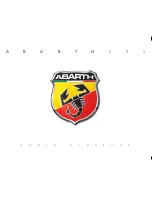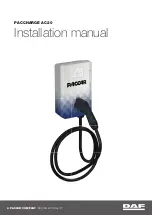
yellow
blue
6-41
CAUTION:
Poorly maintained and improperly used tires
are dangerous.
D Overloading your tires can cause
overheating as a result of too much friction.
You could have an air
-
out and a serious
accident. See “Loading Your Vehicle” in
the Index.
D Underinflated tires pose the same danger as
overloaded tires. The resulting accident
could cause serious injury. Check all tires
frequently to maintain the recommended
pressure. Tire pressure should be checked
when your tires are cold.
D Overinflated tires are more likely to be
cut, punctured or broken by a sudden
impact
--
such as when you hit a pothole.
Keep tires at the recommended pressure.
D Worn, old tires can cause accidents. If your
tread is badly worn, or if your tires have
been damaged, replace them.
Inflation -- Tire Pressure
The Tire
-
Loading Information label, which is on the
rear edge of the driver’s door, shows the correct
inflation pressures for your tires when they’re cold.
“Cold” means your vehicle has been sitting for at least
three hours or driven no more than 1 mile (1.6 km).
NOTICE:
Don’t let anyone tell you that underinflation or
overinflation is all right. It’s not. If your tires
don’t have enough air (underinflation), you can
get the following:
D Too much flexing
D Too much heat
D Tire overloading
D Bad wear
D Bad handling
D Bad fuel economy.
NOTICE: (Continued)
Summary of Contents for 1999 LeSabre
Page 6: ...First Edition for Buick LeSabre Owner s Manual 1999 yellowblue vi NOTES...
Page 110: ...yellowblue 2 54 The Instrument Panel Your Information System...
Page 113: ...yellowblue 2 57 Gage Cluster...
Page 163: ...First Edition for Buick LeSabre Owner s Manual 1999 yellowblue 3 37 NOTES...
Page 164: ...First Edition for Buick LeSabre Owner s Manual 1999 yellowblue 3 38 NOTES...
Page 344: ...yellowblue 7 42 Maintenance Record DATE ODOMETER READING SERVICED BY MAINTENANCE PERFORMED...
















































